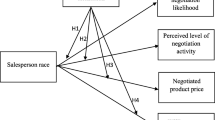Abstract
Skin whitening is a big and booming industry in many developing countries. Its popularity owes mainly to post-colonial, internalized racism. This study examines whether government intervention is necessary and more efficient than market-driven approaches in addressing the health risks and harms associated with skin whitening. We gathered empirical data on the quality and quantity of health-related information about skin whiteners with a multi-stage probability sample of consumers in two cities in the Philippines (n=110; α=0.05). Regardless of their socio-demographic characteristics, we find that cognitive biases and information asymmetries build and sustain consumers’ trust in manufacturers and distributors of skin whiteners while, paradoxically, breeding uncertainties over the integrity of these products. The results are product adulteration and misbranding, leading to pricing advantages for toxic whiteners over safer products. This has impeded regulatory efficacy. We recommend anchoring government intervention in transaction cost-reduction, containing the externalities of skin bleaching, and institutionalizing third party partnerships. Failure to do so would leave consumers extremely vulnerable to the forces of supply and demand that favor toxic whiteners, particularly in a market where voluntary collective action is difficult to organize.


Similar content being viewed by others
References
Mire, A. (2001) Skin-bleaching: Poison, beauty, power, and the politics of the colour line. Resources for Feminist Research 28 (3): 13–37.
Blay, Y.A. (2011) Skin bleaching and global white supremacy: By way of introduction. The Journal of Pan African Studies 4 (4): 4–46.
Pitche, P., Kombate, K. and Tchangai-Walla, K. (2005) Cosmetic use of skin bleaching products and associated complications. International Journal of Dermatology 44 (1): 39–40.
DiMasi, J.A., Hansen, R.W. and Grabowski, H.G. (2003) The price of innovation: New estimates of drug development costs. Journal of Health Economics 22 (1): 151–185.
European Commission-Directorate General Enterprise and Industry. (2007) Impact of European Regulation on the EU Cosmetics Industry. Norfolk, UK: Risk & Policy Analysts.
Friedman, D.D. (1991) Should medicine be a Commodity? An economist’s perspective. In: T.J. Bole III. and W.B. Bondeson (eds.) Rights to Health Care. The Netherlands: Kluwer Academic Publishers, pp. 259–306.
Synovate Philippines. (2004) Skin Whitening in Southeast Asia. Pasig City, Philippines: Synovate.
Bureau of Food and Drugs. (2004) Bureau Circular No. 4-B, 3 April.
Republic Act No. 9711. (2009) 18 August.
Food and Drug Administration. (2011) Advisory No. 2011-012, 4 August.
Cebu Daily News. (2011) DOH to confiscate mercury-loaded whitening creams. Philippine Inquirer, 9 August.
EcoWaste Coalition. (2012) Watchdog Bares 5 More Skin Whitening Cosmetics with Toxic Mercury, http://ecowastecoalition.blogspot.com/2012/12/watchdog-bares-5-more-skin-whitening.html, accessed 9 December.
EcoWaste Coalition. (2011) Groups Laud FDA Ban on 50 Mercury-Tainted Skin Whitening Products, http://ecowastecoalition.blogspot.com/2011/08/groups-laud-fda-ban-on-50-mercury.html, accessed 6 August.
Department of Health/Food and Drug Administration. (2012) Advisory No. 2012-018, 28 November.
House of Representatives Bill No. 3508. (2010) 15th Congress, 29 July.
Andrade, J.I. (2013) Toxic skin creams still sold in Divisoria, Quiapo. Philippine Daily Inquirer, 22 April.
Zambrano, C. (2010) FDA confiscates illegal whitening products, sex pills. ABS-CBN News, 10 December.
Naval, G. (2013) Banned cosmetic products still on sale. Malaya. February 4, p. 2.
Dacanay, B.M. (2011) Filipinos warned against use of killer whiteners. Gulf News, 31 May, p. 14.
EcoWaste Coalition. (2011a) EcoWaste Coalition Goes to Senate to Push for Safe Cosmetics Act, http://ecowastecoalition.blogspot.com/2011/08/ecowaste-coalition-goes-to-senate-to.html, accessed 3 August.
Akerlof, G. (1970) The market for lemons: Quality uncertainty and the market mechanism. Quarterly Journal of Economics 84 (3): 488–500.
Krueger, A.O. (1974) The political economy of the rent seeking society. American Economic Review 64 (3): 291–303.
Barzel, Y. (1982) Measurement cost and the organization of markets. Journal of Law and Economics 25 (1): 27–48.
Cooper, R. and Ross, T. (1984) Prices, product qualities, and asymmetric information: The competitive case. Review of Economic Studies 51 (2): 197–207.
Cooter, R. and Ulen, T. (1988) Law and economics. New York: Harper Collins Publishers.
Dahlman, C.J. (1979) The problem of externality. Journal of Law and Economics 22 (1): 141–162.
Krimsky, S. (2003) Science in the Private Interest: Has the Lure of Profits Corrupted Biomedical Research? Lanham, MD: Rowman & Littlefield Publishers.
City of New York, Department of Consumer Affairs. (1992) A Study in Hype and Risk: The Marketing of Skin Bleaches. New York: Department of Consumer Affairs, http://www.fda.gov/ohrms/dockets/dockets/78n0065/78n-0065-rpt0002-vol1.pdf.
Saint Louis, C. (2010) Creams Offering Lighter Skin May Bring Risks. New York Times. January 16, p. A-1.
Acknowledgements
The author wishes to thank Wilmington University, and The International Honor Society of Phi Kappa Phi for financially supporting this study; survey research team members from Miriam College, the University of the Philippines, and the University of Santo Tomas; Angelita Marañón, Jennifer Myers-Douglas, and Sheldon Peters, for invaluable research assistance; and Professor Carole A Cummings (Wilmington University) for her comments.
Author information
Authors and Affiliations
Additional information
Because skin whitening is an unhealthy, big, and booming industry in many developing countries, the author presents the pricing advantages of toxic whiteners over safer products and compares regulatory strategies.
Rights and permissions
About this article
Cite this article
Mendoza, R. The skin whitening industry in the Philippines. J Public Health Pol 35, 219–238 (2014). https://doi.org/10.1057/jphp.2013.50
Published:
Issue Date:
DOI: https://doi.org/10.1057/jphp.2013.50




